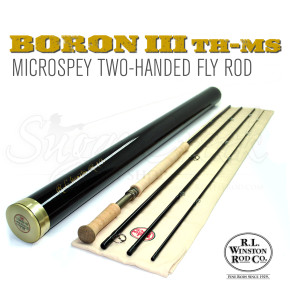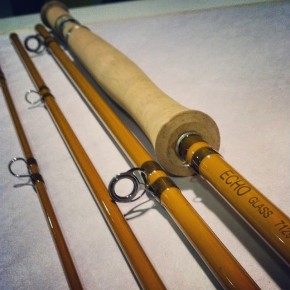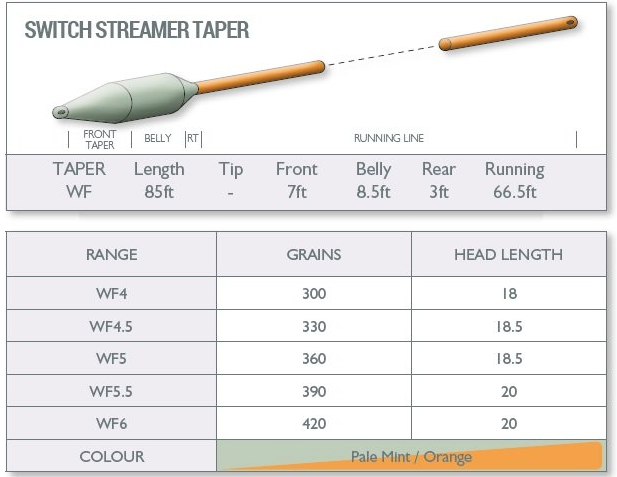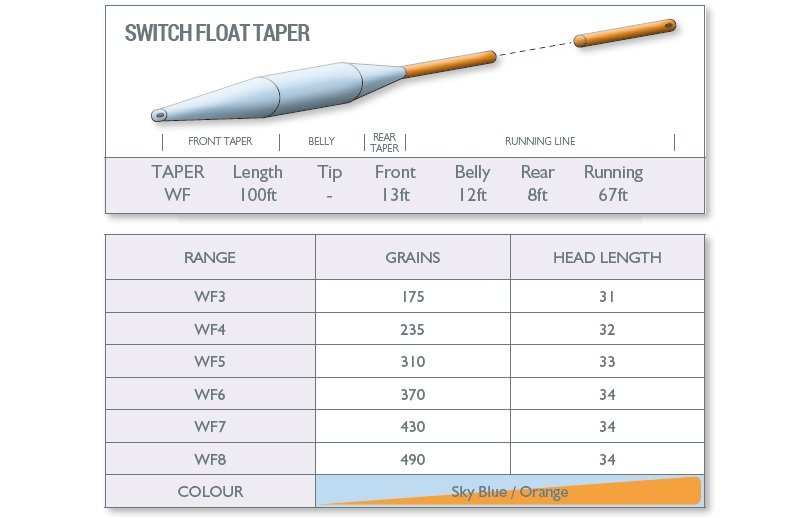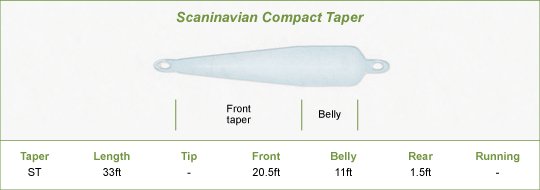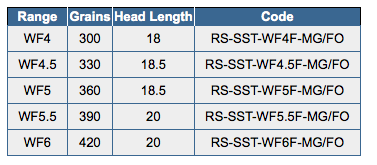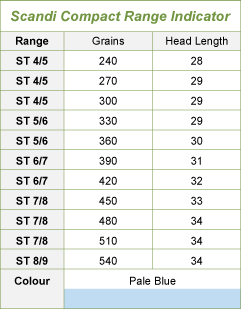Switch rods are a great way to cast further with less effort and stress on the elbow and shoulder. I love my big rods for steelhead. I use a Sage TCX 7wgt Deathstar and a Scott 6 wgt 12 footer to cast pole dancers at stripers. A couple months ago I fished for trout in ponds out of a float tube and ended up two handed casting my rods because my tennis elbow made double hauling impossible. It was then that I decided to look into lightweight trout switch rods. I have always liked the long rod. I own 10 foot 5, 4, and 3 wgt rods. They are great for highsticking nymphs, and can put a mile mend on a dry fly across the river. The added length of a fly rod is great for line management at a price though. Heavier wgt, and more back casting room. But it only I could spey cast a light line, I could cover more water with longer casts and less backcast. Or, I can overhead cast a conventional line if only I can find a really great switch line for a 3 and 4 wgt rods.
I like the Airflo Scnadi Compact lines for my light switch rods. The Airflow Scandi Compacts are short light and they come in a variety of weights. With all the weight at the back of the head, they roll cast like a dream with minimal water anchoring. These are the lightest of the Spey lines available but a couple weeks ago, Aitflow released some lines especially made for trout switch rods – the Switch Streamer and the Switch Float. The Switch Streamer is more of a skagit type line that you can tip with sinking tips and the Switch Float is more like a Scandi head. They are both integrated lines designed for short trout switch.
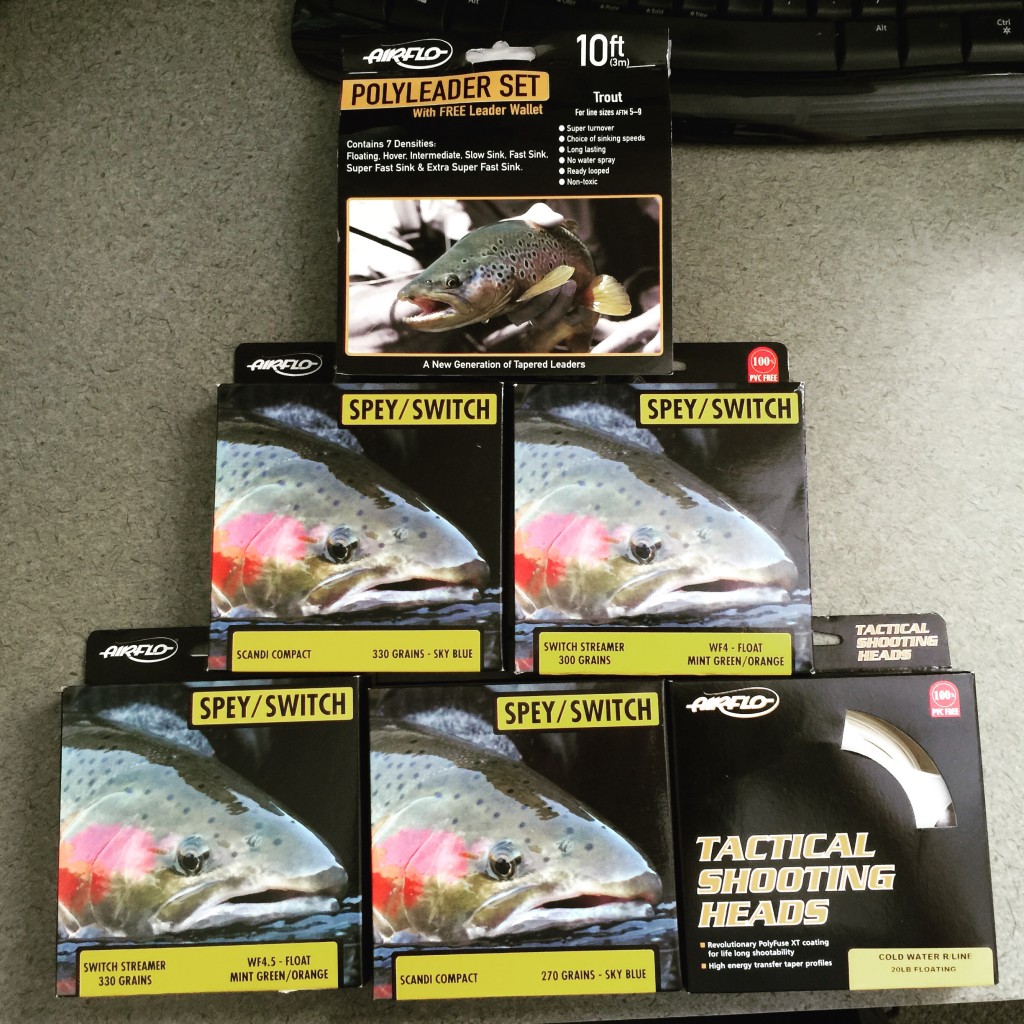 I bought two switch rods specifically for trout fishing– The Echo Glass FG-4108 10’6″ 4wgt. and a Winston 10’6″ #3. Winston recommends the following lines for the #3 Microspey – a Skagit Head from 250-270 or a Scandi Head from 210-240. The Echo Rods don’t come with any line recommendations at all. Both fly rods overhead cast a weight forward long belly fly line like the Rio Grande WF5 and 6 nicely for dry flies, and some fishermen like to overline them 3 line weights for indicators. So a 6 wet for the 3wgt spey or a 7wft for a 4 wet spey. Today I headed out to the Campbell Flycasting Ponds to try out some new lines for the trout spey rods.
I bought two switch rods specifically for trout fishing– The Echo Glass FG-4108 10’6″ 4wgt. and a Winston 10’6″ #3. Winston recommends the following lines for the #3 Microspey – a Skagit Head from 250-270 or a Scandi Head from 210-240. The Echo Rods don’t come with any line recommendations at all. Both fly rods overhead cast a weight forward long belly fly line like the Rio Grande WF5 and 6 nicely for dry flies, and some fishermen like to overline them 3 line weights for indicators. So a 6 wet for the 3wgt spey or a 7wft for a 4 wet spey. Today I headed out to the Campbell Flycasting Ponds to try out some new lines for the trout spey rods.
Winston 3 wgt. Microspey-
Scandia Compact 270 grain with 8 feet of T-11 with 20b test Lazerline.
Airflow Switch Streamer 300 grain wf4 Float
Echo Glass 4 wgt Switch-
Scandoa Compactt 330 gram wotj 10 feet of t-11 with 20lb test Airflow Ridge Shooting line.
Airflow Switch Streamer 220 grain WF4.5 Float.
My favorite lines for the Winston today was the new 300 grain Switch Streamer that just came out this month. I felt that the Boron Winston could even handle more that 300 grains. I also cast a 300 grain Compact Scandi with Lazerline and it sailed. For the Echo Glass, the 330 grain Switch Streamer was just about perfect even though the 300 grain Scandi Compact also casted as far and with the same ease but with Mono. Its hard to throw tight loops with Glass and 3 wgts when Skagit casting. I also brought a 7 wgt “Deathstar” spey rod and it threw 80-100 ft with ease as did the 5 wgt Scott Switch with a 500 grain Scandi. But after casting fast taper heavier switch and spey rods today, the trout spey rods seemed really slow and it was hard to keep the loops on the forward casts as tight. Its harder to cast smaller switch and spey. Timing is more critical and light lines show all the flaws in my casting. Ive read that trout switch rods throw bigger loops by design and that you have to slow the casting stroke way down. Both the 3 wgt and 4 wgt rods threw 80 feet relatively easily but with more effort than the 7wgt Deathstart. I guess I was expecting too much to think that they would throw the right head and shooting line 100 feet just like a spey rod. Trout spey is definitely a different animal. I don’t fish big spey (7wgt and above) enough to really make a really educated comparison, but I hope to get more experience fishiing the rivers for shad this month. I miss running water which is something we don’t have a lot of with the drought.
One of the most confusing things form me with Skagit type lines is the addition of 5-10 feet of t-11 to the end of the line. The most confusion with Skagit lines is the addition of Moe tips and polyleaders. One of the ideas behind Skagit casting is that you want to maintain a constant ratio between the rod length and the head length of the line. The rule is 3 ow 4 times the rod length and varies with each caster. For example for a ratio of 3½: to 1, a 12 ft rod would require 42 ft of line and a 15 ft rod will require 52½ ft. A constant ratio means that the caster does not have to change their casting stroke, regardless of which outfit they pick up. Its all pretty confusing and mysterious to me still.
A final note to mention on the Skagit lines is that the sink tip does not form part of the calculation for line weight. If you look at the spey line recommendation chart and decide on a Skagit line for your rod, make sure you use the weight of the Skagit body. If the chart suggests you need a 550 grain Skagit line, it does not matter which size sink tip you add on to the front end of this (as long as it is not heavier than the Skagit body). The reason for this is that the sink tip usually does not form part of the D-loop and, therefore, plays no role in loading the rod. I use to think that if I needed a 550 grain Skagit line and I was going to use a 150 grain sink tip, I would buy a 400 grain Skagit line for a total line wgt of 550. Ive been told that this wrong and will result in an under loaded outfit. Pick the exact wgt of the Skagit body weight regardless of the sink tip used.
